|
|
Period:
Yugoslav Wars
Region:
Bosnia's Krajina
The Croatian crime in Bravnice - Bosnia 1995
The crime in Bravnice is a war crime that the units of the Army of the Republic of Croatia and the Croatian Defense Council (forces of Bosnian Croats) committed in Bosnia and Herzegovina in September 1995 during their joint operation “Maestral” on the road Donji Vakuf-Jajce in the village of Bravnice.
In this crime, more than 80 Serbs were killed between the age of 3 and 91. Some were captured and taken to camps in Livno, but also in the city of Split in Croatia.
Anonymous persons were digging up the graves of Serbian victims and transferring remains to other locations to destroy the evidence on the crimes of the Croatian army.
The Persecutor’s Office in Croatia has refused to process the suspects, although the Serbian Persecutor submitted abundant documentation. The Hague Tribunal has also refused to process this crime, even though it involved civilian victims.
In 2019, a lawyer from Belgrade, Dušan Bratić filed a criminal charge for command responsibility against general Damir Krstičević, then commander of the 4th Guardian Brigade, which included the perpetrators of the crime.
BACKGROUND
SFR Yugoslavia was a federal state made up of 6 republics (FR Slovenia, FR Croatia, SR Bosnia, and Herzegovina, SR Montenegro, SR Serbia, and SR Macedonia). Both Yugoslavia and the JNA were established on the principle of “brotherhood and unity” of all peoples and nationalities who lived in the SFRY.
The social and economic system of the SFRY was socialism.
The 1974 Constitution of Yugoslavia brought about the decentralization of the SFRY, which later enabled the separatist forces in Slovenia and Croatia, and later in Bosnia and Herzegovina to begin the dissolution of Yugoslavia, followed by bloody wars and persecution.
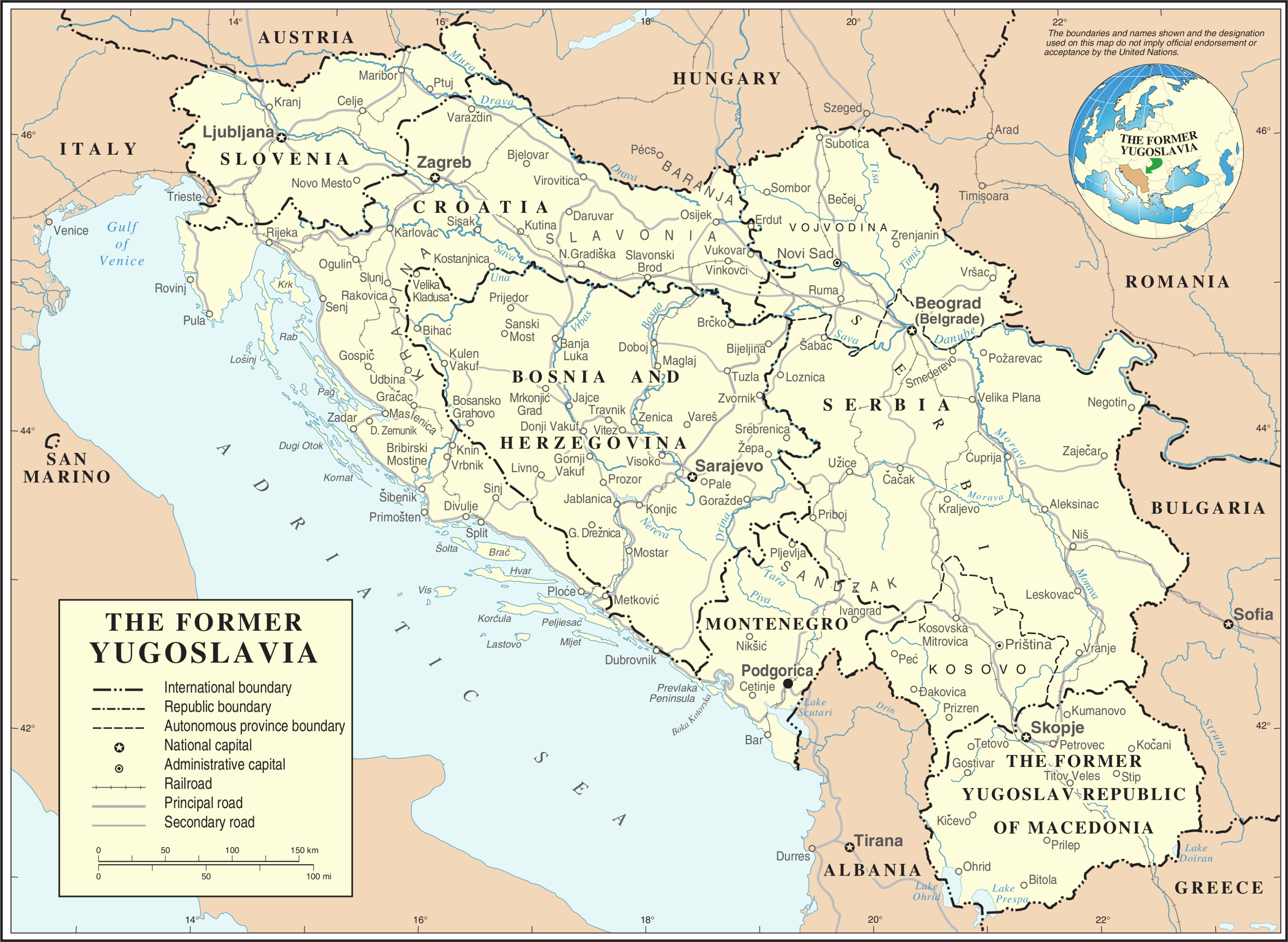
In all the constitutions of Yugoslavia, the Yugoslav People's Army was defined as the only legitimate armed force in the territory of the SFRY, and therefore, the only internationally recognized military entity. At the end of 1989, the SFRY Assembly passed amendments to the Constitution, thus replacing the one-party system with the multiparty system, which meant that besides the Alliance of Communists of Yugoslavia, other parties could now be formed.
At the end of January 1990, the Alliance of Communists of Yugoslavia collapsed, at the 14th SKY Congress in Belgrade, when sharp verbal clashes between Slovenian and Serbian delegates occurred regarding the future of the joint state of the SFRY.
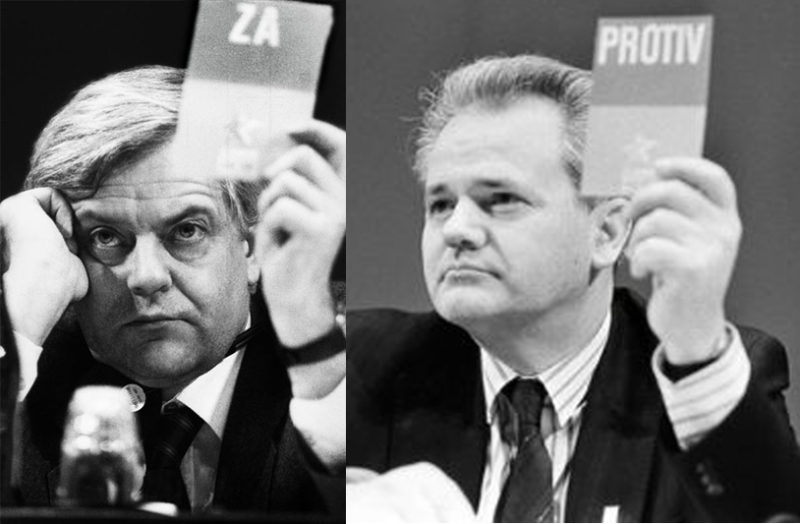
Opposing sides - Kučan and Milosević
The Slovenian delegation left the session, immediately followed by the delegation of the FR Croatia, which brought the issue of the congress into question. After them, the delegations of the FR of Bosnia and Herzegovina and the FR of Macedonia also left the congress.
Thus, after 45 years, the rule of the communists in SFRY ended.
The situation in Bosnia and Herzegovina
Bosnia and Herzegovina has been a central republic within the Socialistic Federal Republic of Yugoslavia, where Muslims, Serbs, Croats, and national minorities lived. On 18 November 1990, a multiparty election took place, the first after World War 2. The government was formed by the anti-communist parties- SDA, SDS, and HDZ. MP that won the highest number of votes (47,4%) was Muslim Fikret Abdić, a businessman from Velika Kladuša.
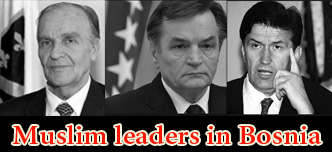
Alija Izetbegović, Ejup Ganić, and Haris Silajdžić
However, he was under pressure by Muslim extremists to step aside since he was against the war and conflicts with Serbs. As it turned out, he only served as bait for Muslim voters.
Alija Izetbegović, a pre-war criminal and author of the notorious chauvinistic “Islamic Declaration” became president of the presidency of B&H. Momčilo Krajišnik, a member of the Serbian party (SDS) became president of the Parliament, while a Croat Jure Prelivan was appointed to the prime minister of the Federal Republic of Bosnia and Herzegovina. The coalition ruled for 15 months. It collapsed at the beginning of the conflicts in Bosnia in April 1992.
Leaders of Muslim Party of Democratic Action- Alija Izetbegović, Ejup Ganić, Haris Silajdžić, and others, advocated the independence of Bosnia and Herzegovina from Yugoslavia as early as 1991. Muslim SDA and Croatian HDZ shared a goal of an ethnically and religiously cleansed state. However, Bosnian Croats wanted integration with Croatia, while Muslims wanted to create an Islamic state.

Izetbegović participated in WW II in notorious Bosnian Muslim 13th Waffen
Mountain Division of the SS Handschar (1st Croatian) member,
known for the WW II genocide of Serbs
The Bosnian independence propaganda was spread by the media and press. As early as October 1991, the press in Sarajevo published open threats directed towards Serbian people. Among everything else, it was announced that the notorious Hadschar Division, Ustasha unit that committed horrible crimes against Serbs in the Independent State of Croatia (NDH) during 1941-1944, would be re-established. This unit had been mostly filled with Muslims. Ustasha crimes in NDH reached their peak in Bosnia itself with Prebilovci, Drakulić, Bileća, Gacko, Donja Gradina, Kupres as the most suffering places.
August 1995 witnessed organized arming of paramilitary forces of Muslims and Croats in Bosnia and Herzegovina through channels of the parties SDA and HDZ, intending to attack the Yugoslav People's Army (JNA). In October 1991, local committees of paramilitary units "Green Berets" and "Patriotic League" were established. In the second half of 1991, Mostar was full of members of the JNA, who came from Croatia (Dalmatia and Dubrovnik area), from where they were expelled or withdrawn. They further withdrew in Užice (Serbia) at the end of March 1992.
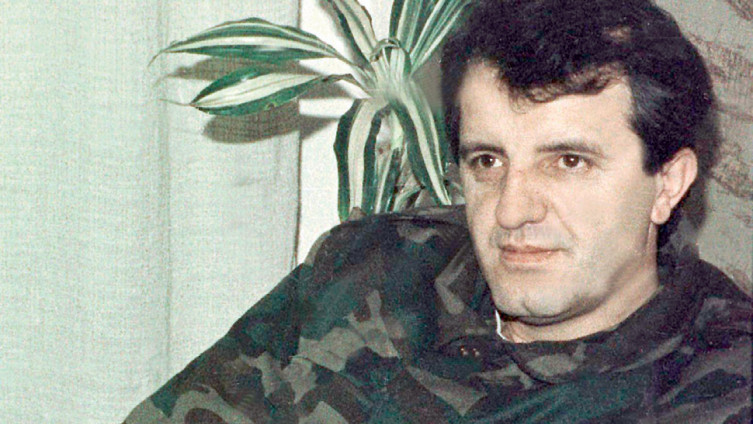
Sefer Halilović - founder of Bosnian Muslim paramilitary forces
On March 1, 1992 a referendum on the separation of Bosnia and Herzegovina from Yugoslavia was organized with 62.4% of voters having voted for independence. A day later in Sarajevo, members of the "Green Berets", led by a criminal Ramiz Delalić aka Ćelo started shoting at a Serbian wedding party at Baščaršija having killed the groom's father Nikola Gardović and wounded priest Radenko Miković.
This was an event that announced the bloody war in Bosnia-Herzegovina in the 1990s, but this also served as cause to dissolve still nationally-mixed police in Sarajevo. After that, numerous attacks on Serbian positions in Bosnia and Herzegovina and on members of the JNA occured (Sijekovac, Kupres, Sarajevo, Tuzla...). International representatives remained silent to these events.
THE CRIME
At the beginning of 1995, the urgent meeting took place in Travnik (central Bosnia) between high-ranking officers of the Croatian and the Muslim Army. General Ante Gotovina (Croatian Army) and general Tihomir Blaškić (Bosnian Croat Army) made a deal with Atif Dudaković (Muslim Army of Bosnia) regarding the joint operation in the region of Western Bosnia.
By the middle of September 1995, the forces of the Croatian Army had considerable success in occupying parts of Bosnia and Herzegovina during the criminal operation “Maestral”, which led to the ethnic cleansing of Serbs, who found themselves in refugee columns. The entire population of the south part of Bosnian Krajina was in these columns.
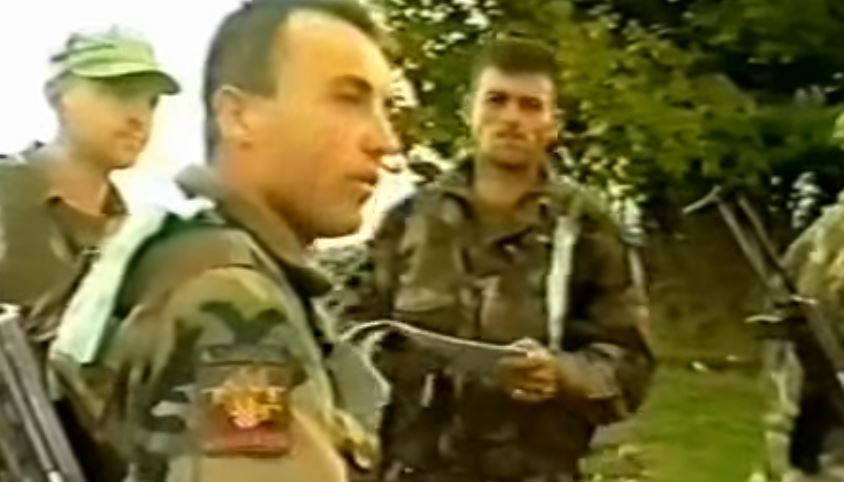
The evidence regarding the role of Damir Krstačević
are visible in the video movie
On 13 September 1995, the members of the Croatian 4th Guardian Motorised Brigade, known as “Spiders”, who were commanded by general Damir Krstičević cut the refugee column of Serbs from Donji Vakuf and surrounding places, while they were fleeing towards Jajce, and committed horrible crimes against Serb civilians on that occasion.
People coming from the opposite direction started to wave and signalize to the bus driver, who was transporting the refugees to stop and turn back. However, he misunderstood their signals as their intention to stop and get into the bus. Since the bus was full, he continued driving. At one point, the bus was on the clear site, and the body of a boy was lying on the edge of the road.
At that moment, the fire from the anti-tank weapon was opened at the bus, after which the criminals surrounded the bus and started shooting at people, although it was clear that they were civilians. At least 80 Serbs were killed, among them, 8 children younger than 14. The victims were incapable of defending themselves.
When the bus stopped, Croatian soldiers with guns pointed at civilians shouted:
“Chetniks, get out of the bus!”
They forced Serbs to leave the bus and start running.
Moreover, they started shooting at the cart behind the bus, although a refugee column was coming behind. This is when the Zeljko family was killed.
Wounded and captured Serb civilians were taken to the camps in Livno.
THE NAMES OF THE VICTIMS
Some of the victims of this crime were:
-
Mihailo Zeljko, murdered
-
Đorđe Zeljko, murdered
-
Jovanka Zeljko, 3, murdered
-
Velibor N. Janković, 13, murdered
-
Dragan D. Janković, 3, murdered
-
Danijela Janković, 17, murdered
-
Borislav Janković, 6, murdered
-
Borka Janković, 6, murdered
-
Draga Naerac, 15, murdered
-
Aleksandar Petrić, 4, murdered
-
Vesna Petrić, 6, murdered
-
Jovan Zeljko, wounded
-
Radoslav Zeljko, wounded
-
Vojin Zeljko, 4, wounded
TESTIMONIES
The witnesses of this gruesome crime have given their testimonies to the investigators, which are kept in the Yugoslav Committee for the Collection of Data on Crimes Committed against Humanity and International Law.
Their testimonies showed that the members of the Croatian Army put great efforts to hide evidence by taking the corpses away, which made it difficult to establish the exact number of the dead and wounded. Yet, it is clear enough that the number of victims is high.
The witness no. 715/95-12, who was in this column of refugees said:
“...I was on a bus full of refugees, and a lot of men, women, and children didn’t have a seat.
When the bus, which was in the column of refugees that moved on carts and tractors came to the village of Bravnice 3km before Jajce, the members of the Croatian Army started shooting at the bus, thus, killing most of the refugees in it. Then, they burnt the bus and fire destroyed all the bodies of the dead and wounded.
The members of the Croatian Army were brutally killing Serbs in the column, most of them being women, children, and elders, but also the ones who were walking in the column, taking their cattle with them. I saw that Croatian soldiers were shooting at the column of people in front of and behind the bus I was in. They shot at everything that was moving.”
Witness Sava Gudalo (born 1960) said the following about the crime in Bravnice:
“They fired rifles and grenades, the bus was full of dead bodies and wounded, and the attack lasted long after the bus stopped. Each of these soldiers was well aware that they were killing civilians because none of us was wearing uniforms or holding weapons. Among men, nobody was younger than 60.
Everyone who was shooting at the bus could see this. In front of us, there were people on carts and those who were walking. All of them were attacked without any warning.
There are a lot of witnesses, who have later died without finding justice. I am witnessing for them and for my sister, who died that day…

Sava Gudalo - a witness and victim
Everything was bursting around us as if we were caught in the hailstorm, and we could hear screams of wounded and children. I felt something warm spreading around my leg, I looked down and realized that I was wounded. I heard a short howl of my sister Mira, who asked me earlier to switch seats. I turned around and saw her hanging head with the wound from the bullet. I grabbed her daughter and went towards the exit, but we couldn’t break through because the fallen bodies filled the aisle.
At one moment, the blast could be heard, the bus was hit by a “wasp” and started to burn. We ran over the bodies of children and elders that were lying on the floor.
I remember a boy, not older than 14, he was driving a horse cart and screaming, while the blood was leaping from the wounds. Next to him, his dead mother was lying. While I was looking around to find my parents, I saw Croatian soldiers taking out the corpses. I saw Andja Vuković without her right hand, taking her son out of the bus, while her daughter was lying dead on the bus. Her cousin Branka Janković lost her son, daughter, and grandson.
My parents, who also couldn’t reach the door, but were scared of new rifles jumped out from the window. This is when my mother broke her leg. They both had several wounds from the gunshots and grenades. We were running, I can’t remember for how long.
At one point, I fell and couldn’t feel my leg anymore, so my niece and neighbor carried me. In the end, they brought us to an abandoned house. At first, there weren’t any doctors and I wrapped my leg by myself with some cotton wool I brought with me.
For five years after the crime, I couldn’t sleep, I didn’t have peace, and every time I closed my eyes I could see fallen bodies on the road. I still wonder what would have happened if we had gone in the other direction, would my sister be alive, would I die if I were in her seat..”
AFTERMATH
Croatian-Muslim aggression that was carried out with the help of NATO in the summer of 1995, ended near Banja Luka when the Army of the Republic of Srpska managed to consolidate and stop further advance of aggressors.

The Mrkonjić city was occupied in September 1995.
Captured Serb civilians from Donji Vakuf and surrounding places were taken to Livno, and Split camps having been imprisoned for two months. They were exchanged in the place of Bočac only on 2 November 1995. Rare were those who received appropriate medical help.
Once Croatian general Ante Gotovina came to Split to visit Bosnian Serbs, who were wounded during the massacre in Bravnice. He was polite in an unpleasant and insincere way. He wanted to wash his hands of the evil his soldiers had committed. During their stay in the hospital in Split, Serb civilians had poor treatment whereby surgeries were performed without anaesthesia, while at the same time, they were constantly subjected to harassment from Croatian guardians and medical staff. Dr. Mladen Kljaković was a rare example of decency and, unfortunately, an exception to the rule.
Several times, Croatian soldiers transferred corpses from the tombs to other locations to hide the exact number of victims of this massacre.
On 21 November 1995, the Dayton Agreement was signed in the American state of Ohio, which ended the war in Bosnia and Herzegovina, and the Republic of Srpska was recognized as the second entity in B&H with 49% of the territory. The city of Sarajevo was completely handed to Muslims, the Federation of Bosnia and Herzegovina, respectively, and the Republic of Srpska got back the cities of Šipovo and Mrkonjić.
YEARS LATER
Croatian general Ljuba Ćesić Rojs has given a statement in which he revealed that ex-minister of the Croatian Defense, Gojko Šušak ordered the destruction of complete documentation of the Croatian Defense Council (paramilitary formation of Croats from Bosnia and Herzegovina) intending to eliminate evidence regarding the involvement of Croatia in the crimes committed in the territory of Bosnia and Herzegovina, but of Croatia itself.
In 1998, at the location Carevo Polje, the team of experts exhumated the remains of 57 people, while the rest are still held missing.

Exhumation of corpses of Serb victims
in Mrkonjić city in Bosnia
The Ministry of Interior of the Republic of Srpska submitted documentation in 1997 to the Prosecutor regarding the crime in Bravnice.
Every year on 13th September, Croatian military and state officials gather to celebrate victory in the operations: “Južni Potez” and “Maestral”.
INDICTMENTS
The following hold command responsibility for the crime in Bravnice:
-
Damir Krstičević, general of the Army of the Republic of Croatia and commander of the 4th Guardian Brigade “Spiders”.
-
Tihomir Blaškić, colonel of the so-called Croatian Defense Council, (HVO) commander of the operational zone Srednja Bosna (Middle Bosnia).
-
Stanko Sopta Akka Baja, colonel of HVO, commander of the so-called Retribution Batallion.
-
Mario Petrović, HVO officer.
No one has been tried for this crime before the courts in Bosnia and Croatia because their prosecutors show no interest in processing one of the most horrible crimes that happened in Bosnia. In the Bosnian Persecutor’s Office, there is a file KT-RZ-192/05, but nothing has been done regarding this case so far.
At the beginning of 2009, Belgrade lawyer Dušan Bratić filed a criminal charge against Croatian general Damir Krstičević in the Prosecutor’s Office for War Crimes in Belgrade. However, there are some indications that the case will be transferred to the Persecutor of Bosnia and Herzegovina.
PUBLICATIONS
The massacre of civilians in Bravnice hasn’t been covered in any books, where testimonies and evidence would be gathered in one place.
Not any documentaries have been made, nor conference organized, where it would be stated that the crime in Bravnice wasn’t an incident, but carefully organized crime.
It is just one segment of the JOINT CRIMINAL ENTERPRISE that was organized against Serbs in Bosnia and Herzegovina by the Croatian and Bosnian regimes led by Tuđman and Izetbegović.
Tags:
Please, vote for this article:
Visited: 3208 point
Number of votes: 5
|